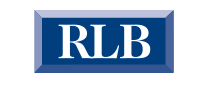Guide for External Auditors & Accounting Professionals
Enhance Your Audit Quality with Data Analytics
External auditors are trusted advisors. It is a role that commands quality, innovation, talent and relevance. RLB helps you improve risk identification, identify fraud and deliver more value to their clients.
Why Use Data Analytics Software
- Centralized approach to capturing and analyzing data
- Increased understanding of the organization’s operations and risk• Improved fraud detection by comparing data from different systems
- Increased communication with stakeholders, management and regulatory entities
- Streamlined processes, strengthened controls and identify cost-saving opportunities
With RLB, you can easily import and blend data from almost any source to analyze 100% of transactions, report findings using visualization tools and automate repeatable processes without programming.
Discover Your Client Data
Quickly identify high-risk areas, trends and outliers to save hours of effort and create a starting point for audit planning and risk assessments.
Seamless Integration with Accounting Packages and CaseWare Working Papers
Increase the quality and consistency of every engagement by obtaining data from upwards of 90 accounting packages and standardize data into a single compatible output.
Interactive Audit Trail
Your entire audit or investigation process is documented in graphical form with drill-down capabilities including all actions performed within a working folder.
Bring Your Results to Life
Use the built-in data visualization tools to share your results with clients and stakeholders.
Simplify Financial Statement Audits
- Identify high-risk accounts by testing accounts receivable, accounts payable, inventory, fixed assets, clearing accounts and other liabilities using the Financial App – a suite of 55+ pre-developed tests and routines.
- Accruals based on estimates can be easily manipulated. RLB can identify potentially improper activity in the accruals section of the balance sheet.
- Transaction-Level Analysis for Expenses – RLB simplifies the identification of improper activity in the expense section of the income statement including timing differences, omitting expenses and spreading costs related to improper activity across multiple expense accounts that may indicate fraud schemes.
Identify Irregularities
When reviewing financial statements, digital analysis can be applied multiple ways to examine irregularities or abnormalities in transactions. RLB’s Benford’s Law tests help you identify potential fraud and errors.
Revenue-Based Analytics
Fictitious revenue and timing differences are two of the more common fraud schemes found on the revenue side of the financial statements. Data analytics can help identify improper activity in the revenue section of the income statement.
Financial State Analytics
Some fraud schemes are more easily detected in a high-level view of the financial statements, rather than at the account level. Data analytics can help identify potentially improper activity at the financial statement level.
Trend Analysis
Data analytics is highly effective in seeing changes and patterns within vast amounts of data. With RLB, you can identify unusual movements near the end of a quarter or year which could indicate early recognition of revenue or postponement of costs, and in correlating accounts that should be positively or negatively correlated.
